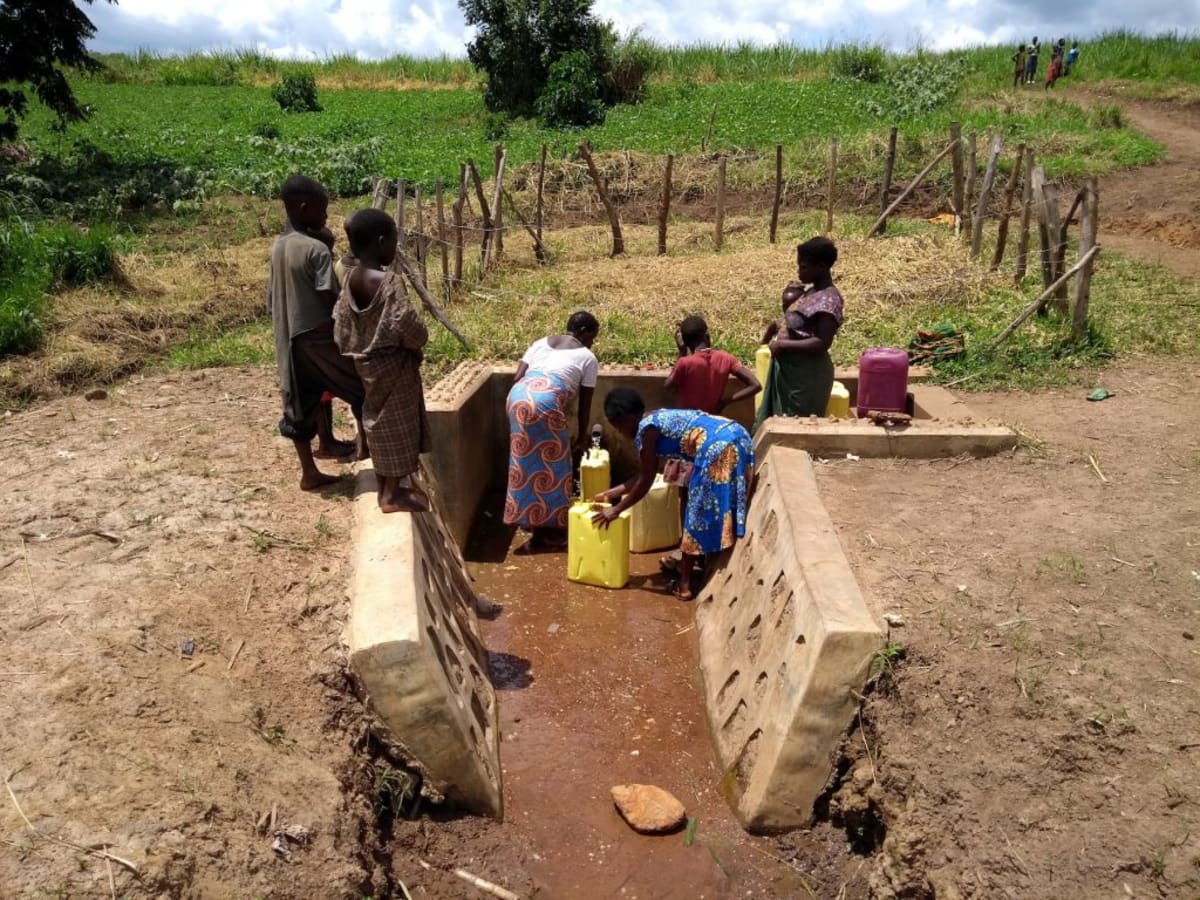Most community members wake up at 6am to go to their gardens where they work on crops for their own consumption. They plant these kinds of crops for their families on a small plot of land, because their real investment is in sugarcane. After checking their gardens, they move on to their sugarcane farms - with the goal being to sell in bulk to local sugar factories. This area is also known for a high production of bananas, which they sell to the neighboring markets in Ekarakaveni.
After farming in the cool of the morning, men go to the trading center to earn money in different ways - some are shop attendants while others are mechanics. The women remain at home to do domestic work like preparing meals, looking after children, and cleaning the homestead.
In the evening, most men meet at the trading center to socialize before they return home and prepare for sleep at 10pm.
This community has a very poor road network, which makes traveling to and fro difficult.
Water
The community faces a water problem. Mr. Ismail Ecoku said, "We access water from an old, contaminated and broken spring that leads to water diseases like diarrhea. Besides, the health conditions are not good since the available hospitals are not well-facilitated with enough drugs. Hence a lot of money is spent on treatment!"
The spring has eroded behind the cement headwall and requires reconstruction. Though someone came through and built this concrete wall and installed a discharge pipe recently in 2011, proper measures were not taken to protect the spring behind the discharge pipe. Activities and sub sequential erosion behind the concrete has diverted the water to pool at the surface.
Community members come and dunk their plastic containers in this dirty water, which they use for drinking, cooking, and cleaning. The field officer who first visited this water source reports that not only is the water visibly contaminated by erosion and surface runoff, but that it smells too. After drinking this water, community members suffer from typhoid.
Sanitation
Less than half of households have a pit latrine. The materials used for these vary by a family's economic status - ranging from bricks to sticks and mud. Most of these have grass-thatched roofs and no doors. Because of such low latrine coverage in this community, open defecation is an issue. When a family doesn't have a pit latrine, they seek the privacy of bushes and farms to relieve themselves.
Here’s what we’re going to do about it:
Training
Training’s main objectives are the use of latrines and observing proper hygiene practices, since these goals are inherently connected to the provision of clean water. Open defecation, water storage in unclean containers and the absence of hand-washing are all possible contaminants of a household water supply. Each participating village must achieve Open Defecation Free status (defined by one latrine per household), prior to the project installation.
This social program includes the assignment of one Community Development Officer (CDO) to each village. The CDO encourages each household to build an ideal homestead that includes: a latrine, hand-washing facility, a separate structure for animals, rubbish pit and drying rack for dishes.
We also implement the Community Led Total Sanitation (CLTS) approach with each of our village partners. This aims to improve the sanitation and hygiene practices and behaviors of a village. During these sessions, village leaders naturally emerge and push the community to realize that current practices of individual households – particularly the practice of open defecation– are not only unhealthy, but affect the entire village. CLTS facilitates a process in which community members realize the negative consequences of their current water, sanitation and hygiene behaviors and are inspired to take action. Group interactions are frequent motivators for individual households to: build latrines, use the latrines and demand that other households do the same.
Spring Protection
Over continued visits to the community, the viability of a hand-dug well diminished. We just couldn’t find a good construction site for a well that would yield safe, clean water. The terrain here is very hilly; a great place for flowing springs but a difficult place to dig a well.
Considering the convenience, reliability, and long history of the spring they're already using, the community has decided to unite with us to build a spring protection system for their current source. Once construction is completed, the spring will begin to yield clean drinking water.
There’s a lot of work to be done: Community members will have to help our team clear the land around the spring, diverge the water, build a catchment area with walls allowing for discharge pipes and steps in and out, and dig drainage. Local families will host our spring protection artisans while they begin the sanitation improvements needed for a successful partnership. We all look forward to making these improvements together!
This project is a part of our shared program with The Water Trust. Our team is pleased to provide the reports for this project (formatted and edited for readability) thanks to the hard work of our friends in Uganda.

 Protected Spring
Protected Spring
 Rehabilitation Project
Rehabilitation Project

























